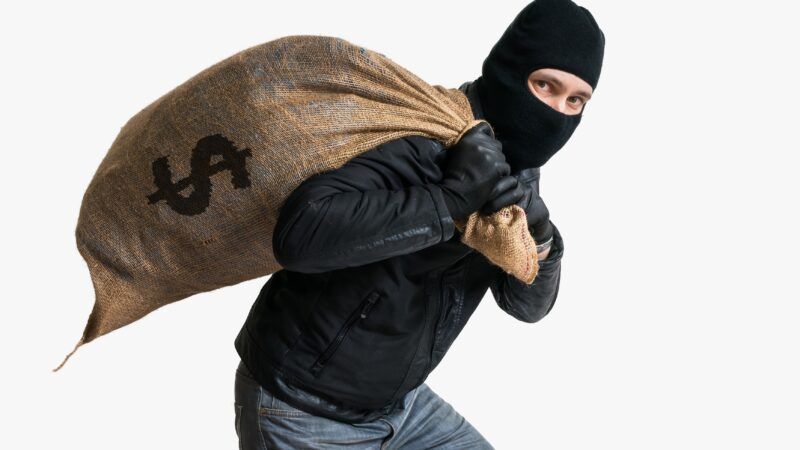Scammers Stole $200 Billion From Two Federal COVID Aid Programs
A new audit says one out of every $6 distributed by the Small Business Administration during the pandemic was stolen.

Fraudsters stole more than $200 billion of aid distributed by the Small Business Administration (SBA) during the course of the COVID-19 pandemic.
That eye-popping figure was announced Tuesday in a report from the SBA Office of Inspector General that assessed the SBA's handling of the Economic Injury Disaster Loan (EIDL) and Paycheck Protection Program (PPP). The report concludes that the SBA "weakened or removed the controls necessary to prevent fraudsters from easily gaining
access to these programs" and that "the allure of 'easy money' in this pay and chase environment attracted an overwhelming number of fraudsters to the programs."
Ultimately, more than one-sixth of the $1.2 trillion disbursed through the two programs was stolen, according to the report.
While much attention has been paid to the potential fraud within the PPP, the $136 billion stolen from the EIDL represents a shocking 33 percent of the total amount spent through that program, which was intended to help businesses cover non-payroll operating expenses during the pandemic.
The new data on COVID-related fraud at the SBA are a long-awaited update—and a significant increase—to previous projections that estimated fraud levels at $86 billion in fraud in the EIDL program and $20 billion in the PPP.
Even the new, higher numbers might undercount how much money was lost: a recent Associated Press review of pandemic-related spending estimated that $400 billion was stolen or wasted. That analysis included $123 billion that the A.P. determined to have been wasted or misspent, while the updated SBA OIG report focuses solely on funds lost to fraud.
The new report once again highlights how utterly overwhelmed the SBA was by the volume of spending Congress asked it to distribute in the early days of the pandemic. The SBA "executed over 14 years' worth of lending within 14 days, and this was just the beginning," auditors noted.
Within that environment, avoiding fraud was impossible. Still, the SBA worsened the situation in key ways. For example, the agency did not run loan applications through the Treasury Department's "Do Not Pay" database—a list of known criminals and scammers—until 2021, long after the bulk of the pandemic spending was out the door. In a May 2021 report, the SBA's inspector general noted that the agency did not have "a centralized entity to design, lead, and manage fraud risk" until February 2022—nearly two years after it began distributing PPP loans.
"Since SBA did not have an established strong internal control environment for approving and disbursing program funds, there was an insufficient barrier against fraudsters accessing funds that should have been available for eligible business owners adversely affected by the pandemic," the SBA OIG report concludes.
In all, the SBA issued more than 4.5 million loans to fraudulent recipients. In one case highlighted in the report, a group of eight people submitted at least 150 fraudulent loan applications and obtained over $18 million in PPP and EIDL funds, then used the funds to buy "luxury homes, gold coins, diamonds, jewelry, luxury watches, fine imported furnishings, designer handbags, clothing, and a luxury motorcycle." In another case, a single person managed to "scam the system 150 times over, securing $3 million for herself and those involved in the conspiracy."
We only know about those situations because the perpetrators got caught. Many others remain on the lam. So far, investigations into COVID-related fraud have netted 1,011 indictments, 803 arrests, and 529 convictions. The joint efforts of the SBA, U.S. Secret Service, and other federal agencies have resulted in nearly $30 billion in COVID funds being seized or returned to SBA, according to the report.
That leaves a mere $170 billion—roughly equivalent to the gross domestic product of Kuwait—that has vanished without a trace.


Show Comments (35)